Part 4- The Hunt
John W. Garbutt- Class of 2019
By the second weekend of May I anticipated finding evidence of hatchling or nestling stage herons. When attempting to find evidence that the eggs have hatched, I look for many things. One behavioral indicator is seeing that the adult is no longer incubating but standing at the nest. Another visual clue is to look for white-wash below the nest indicating the young had eaten their first meals. An auditory clue is to listen for the frantic begging calls of the young as the parents arrive to feed them. My favorite indicator is one that does not require being near the nests at all. During a majority of courtship and incubation, I almost never see a heron hunting along the pond at sunrise. I always pass the pond before visiting the colony and on this visit, I anticipated seeing them hunting for their young.
On this day, I paused when I witnessed a grackle chase a large gray bird. My first thought was that a Cooper’s Hawk was raiding the Red-winged Blackbird colony in the cattails to feed itself or its young. Before I could figure out who the grackle chased, I noticed a Yellow-crowned Night-Heron hunting along the edge of the pond. I soon noticed multiple herons and the squabbling between them over resources was a good indication that the herons had young to feed. I then saw a Great-tailed Grackle chasing a heron, as they both feverishly attempted to gather protein. I later witnessed a male Common Grackle gathering as many insects as it could carry.
My attention was then quickly drawn to the pond as its surface came alive as if a torrential rain hit the surface. My curiosity piqued, I saw hundreds of small fish darting near the surface. Larger fish, I believed to be Largemouth Bass and Channel or Blue Catfish, were along the edge of the pond in the cattails, presumably the males guarding over their fry. Bullfrogs splashed for cover as I kept discovering more and more fish. Generations of Cottontail Rabbits foraged between the pond and riparian area. I expected one of the nesting Swainson’s Hawks to swoop in at any moment.
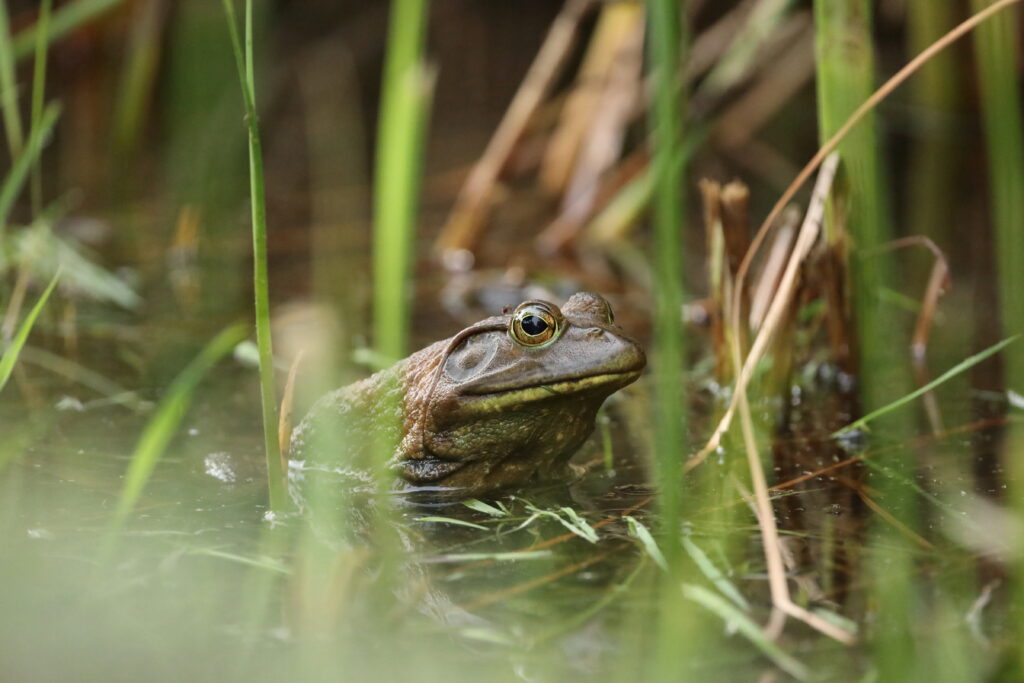
One of the American Bullfrogs seen on this day.
Above, a pair of Great Blue Herons headed west with purpose and without thought to the bounty below. A reserved spot must have awaited them at their favorite Sunday breakfast location. I proceeded along the edge and flushed an unseen Green Heron who squawked in protest at my presence as it flew to the other side of the pond. As I traced its path, I noticed a pair of Mississippi Kites, Chimney Swifts, and swallows hunting insects above. I made my way toward where the Green Heron landed and saw four Night-Herons. I then worked my way into position to hopefully photograph the hunt.
I had noticed on previous Sundays that a church sometimes meets at the park and uses percussion in their services. It was to this beating of the drums accompanied with the Swainson’s Thrush’s flute like song that I watched a heron’s stealthy, purposeful, and precise movements. I could feel my pulse synchronize to the rhythm of the music as if Hans Zimmer was scoring “Heron Hunt” for an upcoming iMax nature documentary.
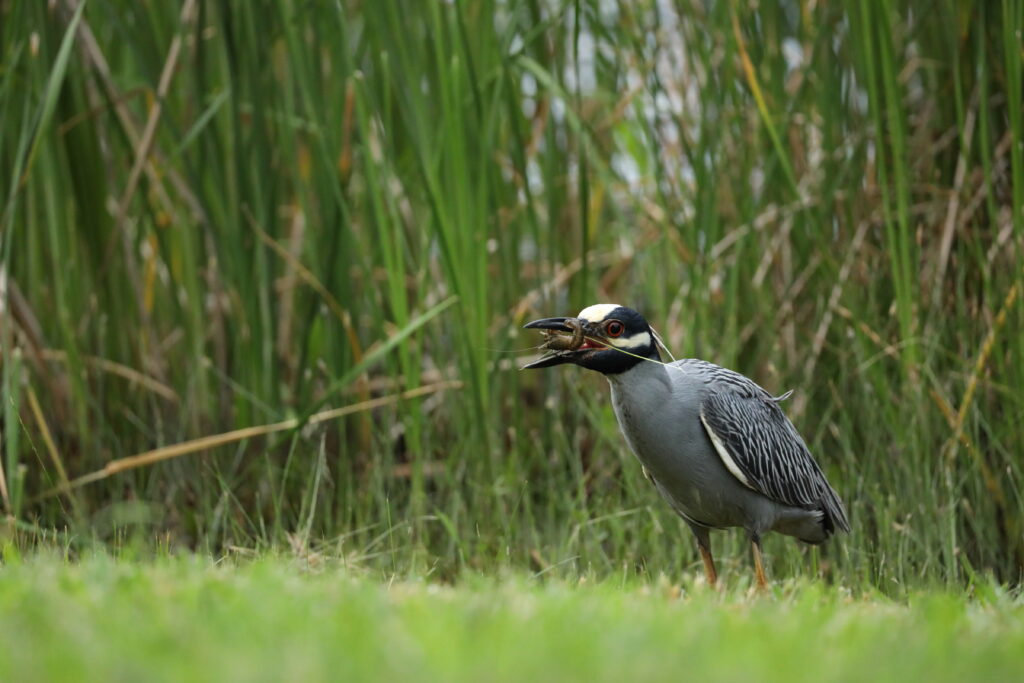
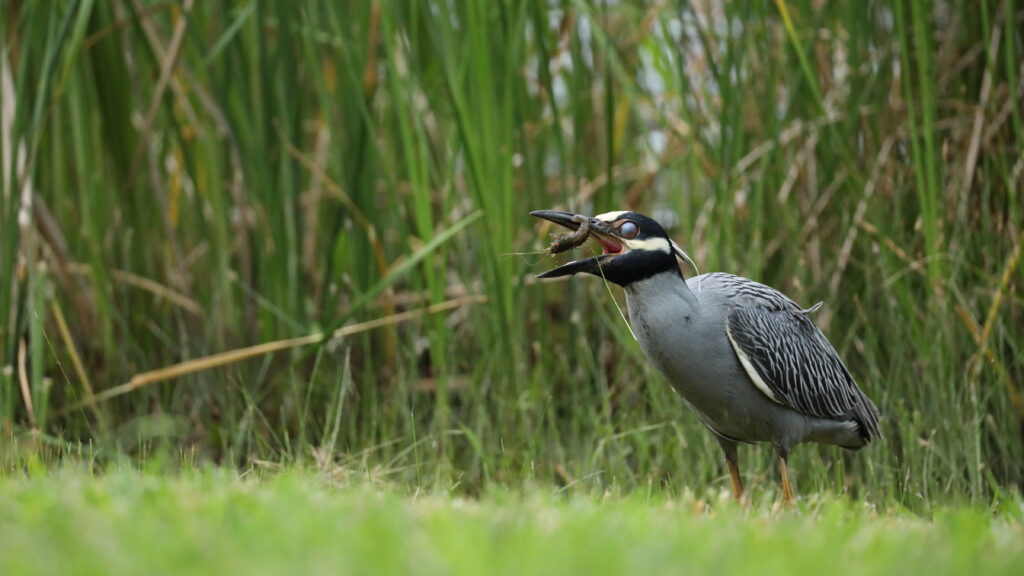
Yellow-crowned Night-Heron tossing a crayfish.
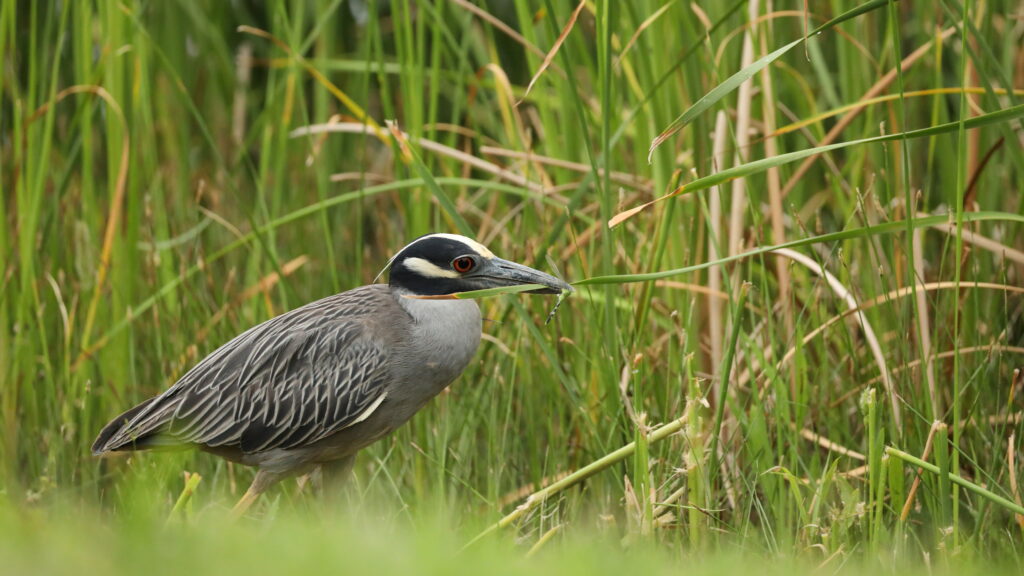
Night-Heron with an Eastern Pond Hawk.
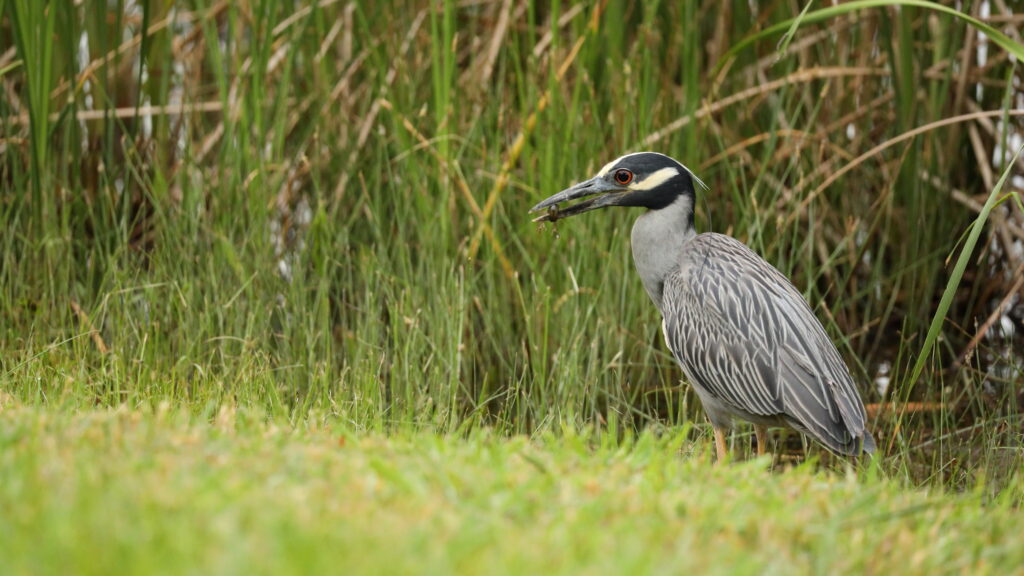
Another crayfish for feeding the young.
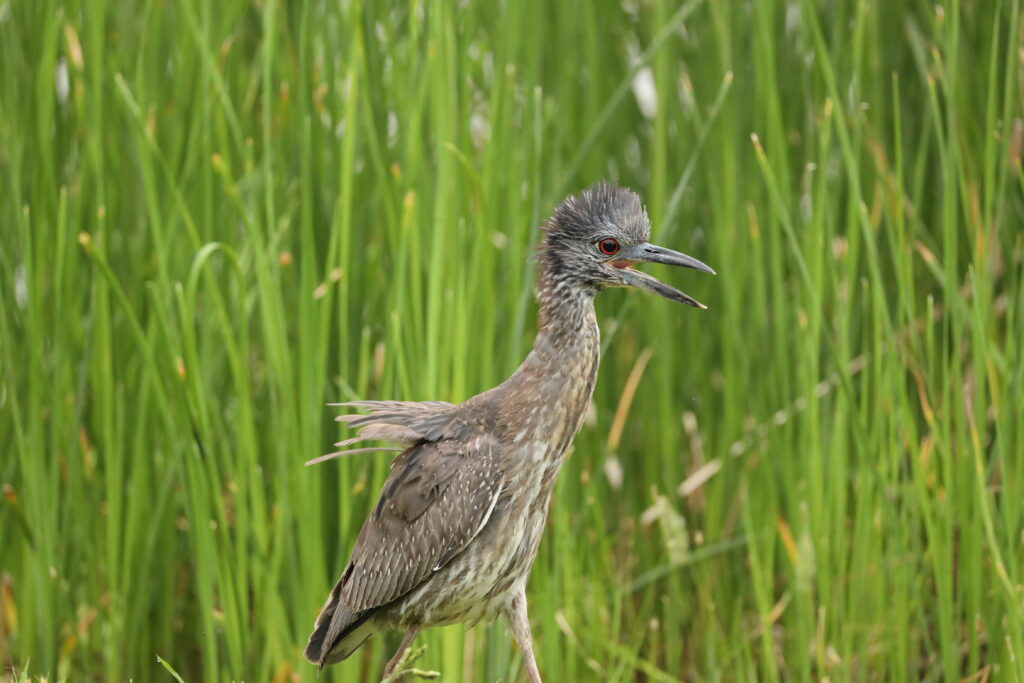
This younger heron was charging toward an older heron as if it owned the place.
My time at the pond complete, I thought of all the activity, as I began to make my way into the riparian area to check on the heron nests. It was interesting to think how one predator seeking prey, is another’s prey, dependent of their position in nature’s hierarchy. I surveyed the main concentration of nests and found all in good shape. I heard young at two locations, found some white-wash, and saw adults either incubating or standing at the nests. I also had a firm count at this time of nine nests. Five days later I saw my first young Night-Heron of 2023’s colony.
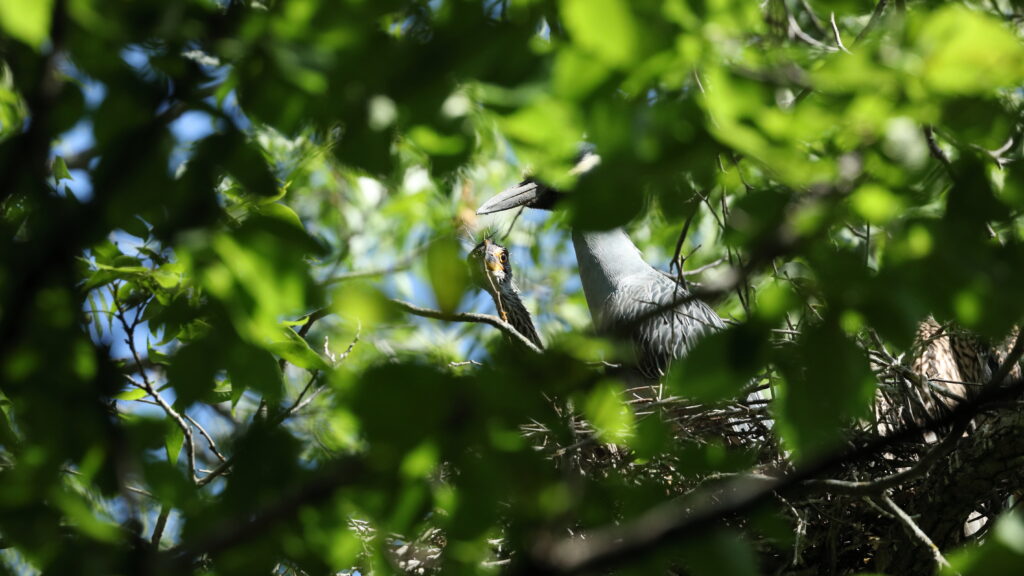
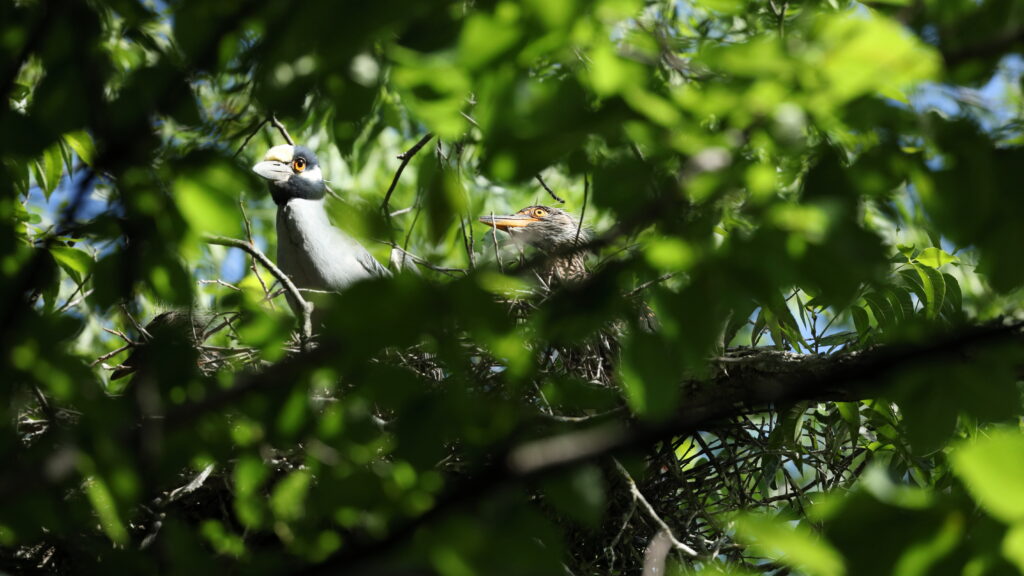
My first visual on nestlings in 2024. These at the nest near the Cooper’s Hawk nest which I thought had been abandoned. It turns out they were just further along in the process.
The young were starting to hatch, and I hoped to photograph them over the next few weeks and to see them fledge from their nests into the world.



[…] John W. Garbutt – My Spring Amongst the Night-Herons- Part 4 […]